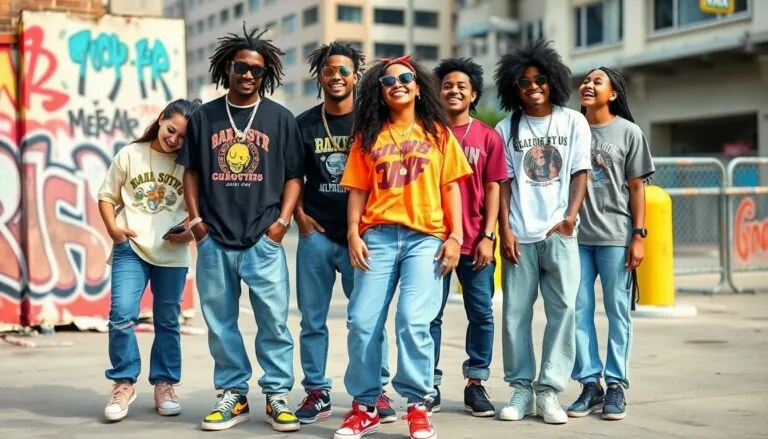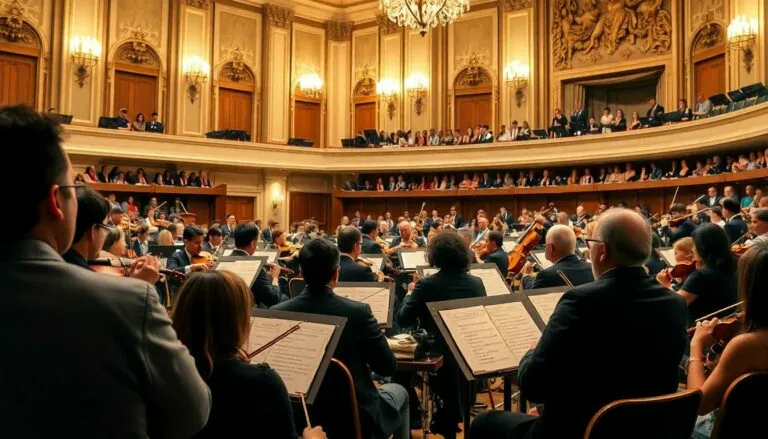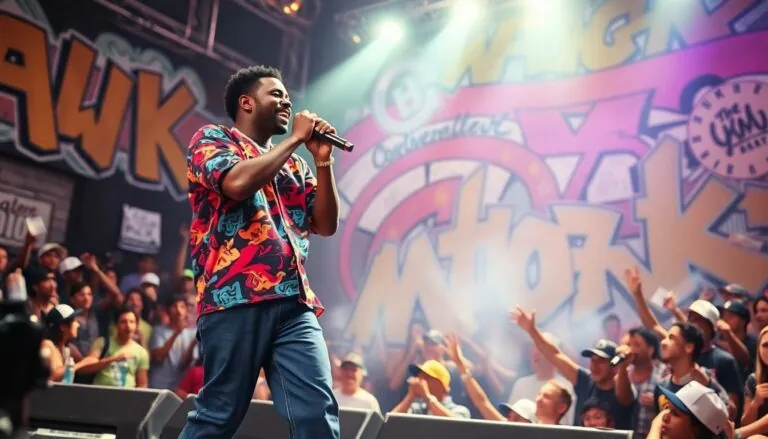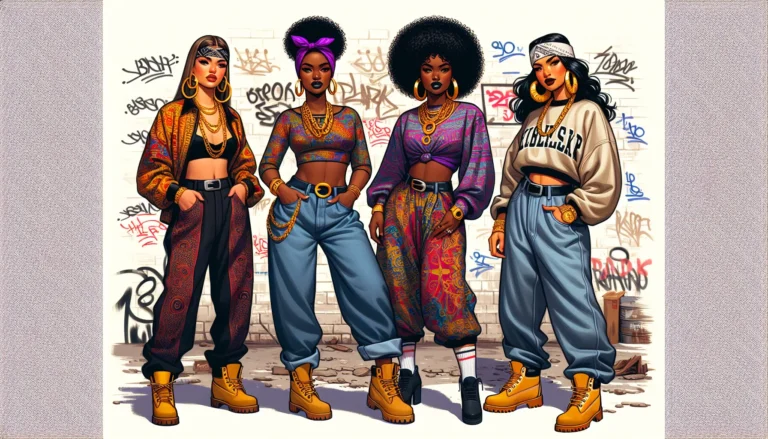Table of Contents
ToggleIn a world where genres collide like an over-caffeinated DJ at a block party, industrial hip hop emerges as the wild child of the music scene. Picture gritty beats and haunting synths dancing with razor-sharp lyrics that bite harder than a New York winter. This genre isn’t just a fusion; it’s a full-blown sonic rebellion that challenges the status quo and makes you question everything you thought you knew about hip hop.
Overview of Industrial Hip Hop
Industrial hip hop represents an innovative subgenre that pushes boundaries and redefines the traditional hip hop form. Merging aggressive sounds from industrial music with the rhythm and lyricism characteristic of hip hop creates a distinct auditory experience. This genre often incorporates heavy use of distorted beats, abrasive instruments, and electronic elements, distinguishing it from more mainstream styles.
Prolific artists such as Death Grips and Dälek exemplify the raw energy inherent in industrial hip hop, showcasing an unfiltered approach to lyrics and sound. Their work often reflects themes of alienation, societal discontent, and a critique of mainstream culture. Collaborations between genres amplify the genre’s impact, bridging connections with electronic, punk, and metal music.
Instrumentation frequently features synthesizers, drum machines, and sampling techniques, resulting in complex layering of sounds. Such elements produce a frenetic atmosphere that aligns with the confrontational and rebellious nature of the lyrics. The visual aesthetic also plays a crucial role, often incorporating disturbing imagery that complements the music’s intensity.
Industrial hip hop has roots tracing back to the 1980s, evolving from the cross-pollination of hip hop and industrial genres. Influences from pioneering acts like Public Enemy and Nine Inch Nails laid the groundwork for today’s interpretations. The genre continues to challenge artistic norms and engage listeners, making it a vital component of contemporary music culture.
Engagement with audiences through live performances often leaves a lasting impression, marked by visceral experiences. Clubs and underground venues commonly host industrial hip hop acts, fostering a sense of community among fans. This genre vibrantly illustrates the convergence of musical styles, pushing artistic limits while inviting critical dialogue.
Origins and Evolution
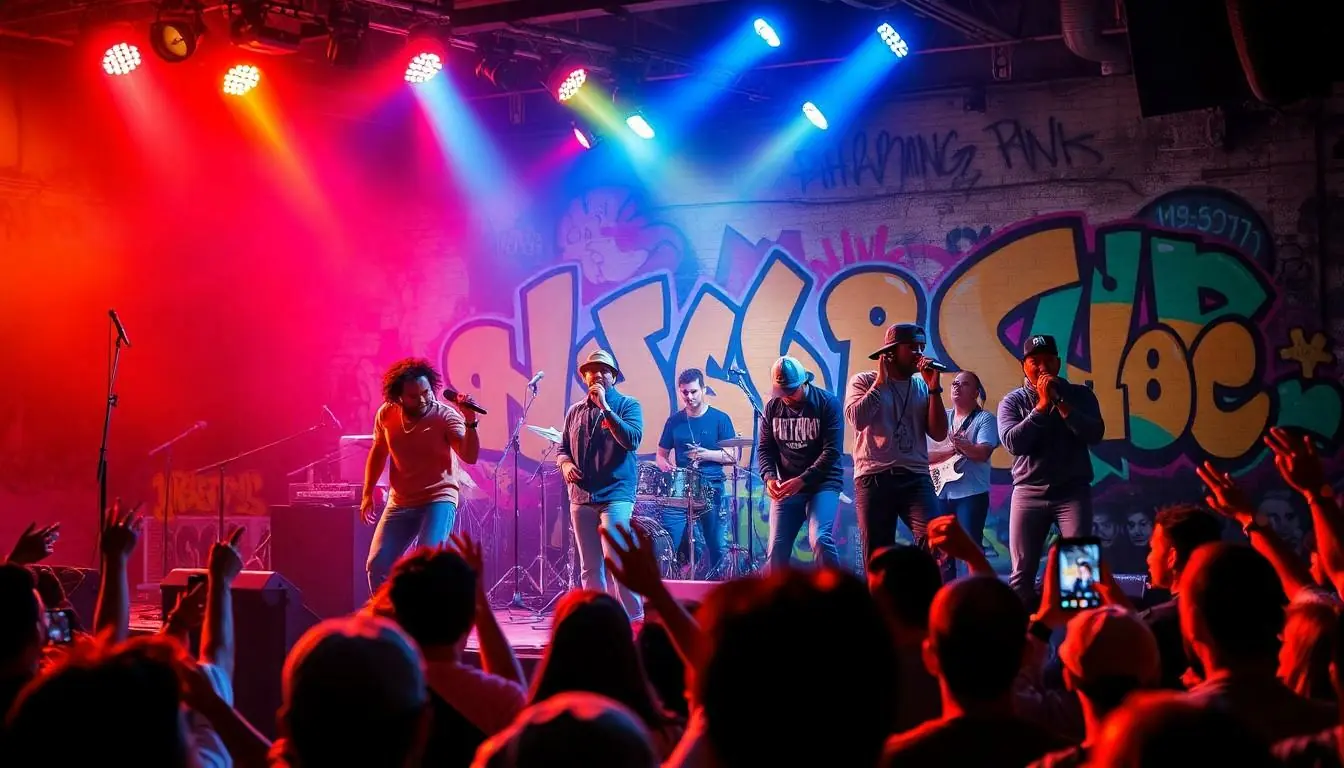
Industrial hip hop emerged in the late 1980s, drawing on the aggressive soundscapes of industrial music and the rhythmic foundations of hip hop. Both genres merged to create a new form expressing social discontent and artistic innovation.
Early Influences
Pioneering acts like Public Enemy and Ice-T significantly shaped the genre’s development. Their incisive lyrics highlighted societal issues, foreshadowing the themes explored in industrial hip hop. Meanwhile, bands like Ministry and Skinny Puppy laid the groundwork with their heavy use of electronic instrumentation and distorted sounds. The intersection of these diverse musical styles ignited a new wave, creating a fertile ground for the evolution of industrial hip hop.
Key Artists and Milestones
Death Grips represents a defining force in industrial hip hop, known for their experimental approach and confrontational lyrics. Dälek also made significant contributions, blending hip hop with noise and avant-garde elements. Notable milestones include the 2012 release of Death Grips’ “The Money Store,” which garnered critical acclaim and expanded the genre’s reach. Underground performances became vital, allowing artists to cultivate a loyal fan base and assert their presence in a mainstream landscape resistant to their sound.
Characteristics of Industrial Hip Hop
Industrial hip hop showcases a distinct fusion of aggressive sounds and lyrical depth, attracting listeners with its innovative approach to the genre.
Sound and Production Techniques
Industrial hip hop features distorted beats and abrasive instruments, creating a raw sonic landscape. Drum machines and synthesizers deliver an intense auditory experience that challenges traditional hip hop aesthetics. Sampling techniques amplify the genre’s uniqueness, often incorporating sounds from industrial music. Artists carefully blend these elements to produce a frenetic atmosphere that resonates with audiences. Notable tracks often demonstrate a signature approach to production, emphasizing a confrontational edge. The genre thrives on experimentation, pushing the boundaries of sound through inventive layering.
Lyrical Themes and Concepts
Lyrical themes in industrial hip hop reflect social discontent and alienation, resonating with listeners. Artists convey messages that often critique societal structures and explore personal struggles. Themes of resistance and rebellion are woven throughout the lyrics, challenging conventional norms in both hip hop and society. Intense imagery and sharp wordplay engage the audience, provoking thought and reflection. Many artists address existential issues, linking personal experiences with broader societal concerns. Confrontational language underscores the urgency of their messages, fostering connection with listeners.
Notable Industrial Hip Hop Artists
Industrial hip hop features several influential artists who have significantly shaped the genre’s sound and themes. These pioneers continue to push boundaries and inspire new generations of musicians.
Profile of Influential Figures
Death Grips stands out for their aggressive sound and confrontational lyrics, especially with albums like “The Money Store.” Dälek blends various styles, using dense layers of sound to create a unique listening experience. Public Enemy remains iconic for their politically charged messages, while Ice-T paved the way in addressing societal issues through powerful storytelling. Additionally, artists like Ministry and Skinny Puppy have influenced the genre with their heavy use of electronic elements, integrating industrial music’s aesthetics into hip hop’s foundations. They all contribute to the diverse fabric of industrial hip hop.
Impact on the Genre
Notable artists have redefined the boundaries of industrial hip hop, bringing new life to its sound and messages. Death Grips’ experimental approach has introduced innovative techniques that challenge listeners, while Dälek’s fusion of genres expands the audience’s perception of hip hop. Public Enemy’s impact on political discourse shaped not only the genre but also encouraged artists to engage with social issues seriously. Ice-T’s storytelling techniques provide authenticity, emphasizing personal narratives that resonate deeply. The collective contribution of these figures elevates industrial hip hop, affirming its vital role in contemporary music culture.
The Future of Industrial Hip Hop
As industrial hip hop evolves, it embraces new trends and innovations.
Trends and Innovations
Emerging technology impacts production techniques in the genre. Artists integrate advanced software and hardware, enhancing soundscapes and deepening the listening experience. Collaborations across genres become more frequent, opening doors for fresh ideas and sounds. The rise of social media amplifies exposure, allowing diverse artists to share their music with global audiences. Live performances adapt to incorporate immersive visuals, engaging fans in unique ways. Experimentation with unconventional instruments shows no signs of slowing down. Innovations in sampling techniques introduce unexpected elements, challenging traditional structures. Increased emphasis on thematic exploration continues to resonate deeply with listeners. All of these factors contribute to an exciting landscape for industrial hip hop, ensuring it remains relevant and progressive in the coming years.
Industrial hip hop stands at the intersection of innovation and rebellion. Its unique blend of aggressive beats and sharp lyrics invites listeners to engage with challenging themes of society and personal struggle. As the genre evolves it continues to attract a diverse audience drawn to its raw energy and thought-provoking messages.
With the rise of technology and social media artists are finding new ways to push creative boundaries. This vibrant subgenre not only resonates with fans but also fosters a community that thrives on dialogue and exploration. As industrial hip hop forges ahead it promises to remain a vital force within the contemporary music landscape.



